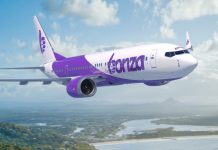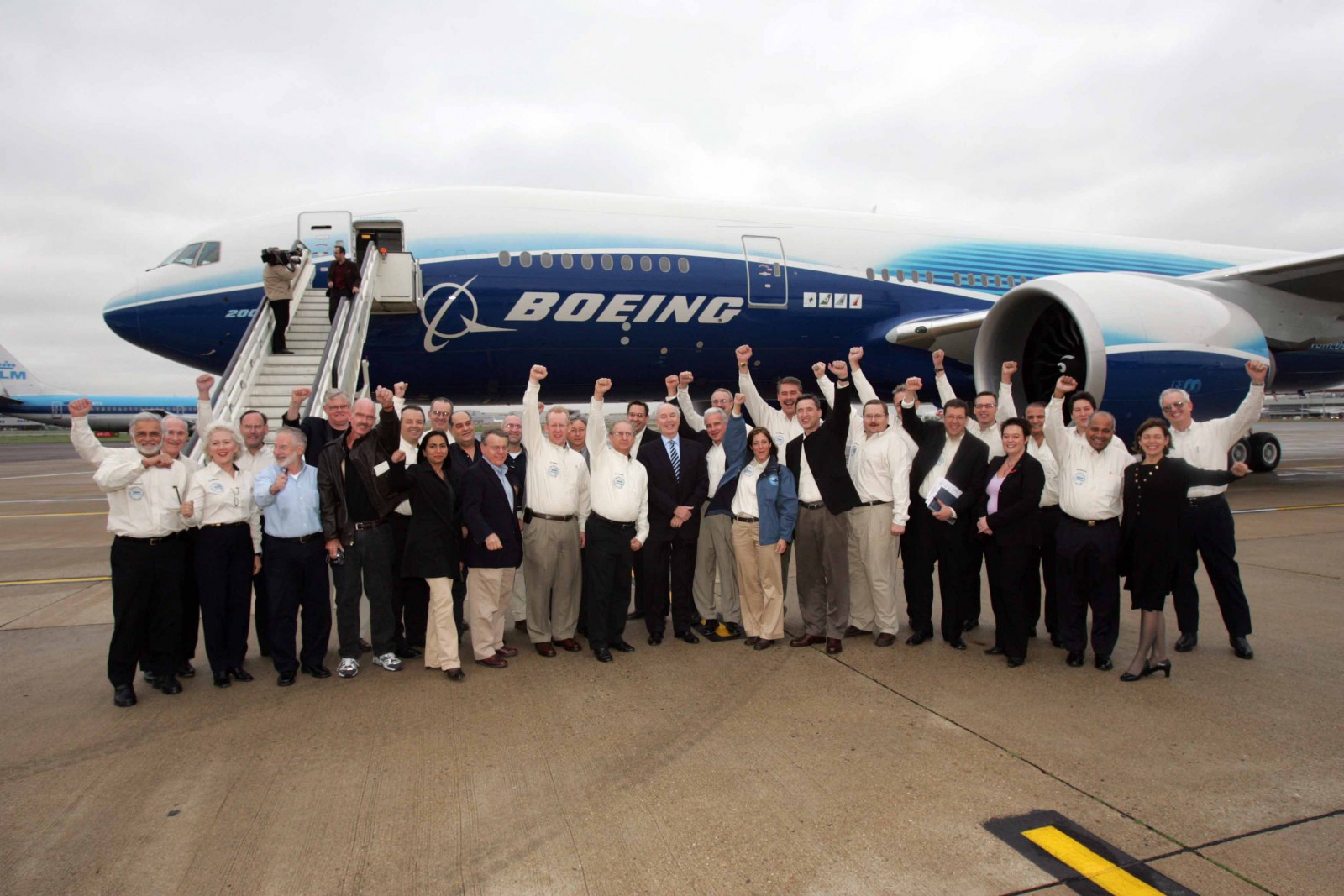The world’s longest nonstop flight was a night and a day and a night to remember and a real blast.
As Singapore Airlines counts down to the relaunch of its Singapore to New York nonstop service with the Airbus A350-900ULR Airlineratings.com recounts some of the great long-range flights such as the 2005 world record flight of the Boeing 777-200LR.
I was aboard the 777‑200LR for its record-breaking flight from Hong Kong to London – the wrong way – on November 9‑10, 2005.
See our video Dispelling the myths of flying.
Boeing wanted to prove the long-range capabilities of the 777‑200LR.
Helping the 35 passengers, made up of flight and technical crew, Boeing executives and a handful of media to create history was a fuel load of 164 tonnes.

Boeing had fitted out its 777‑ 200LR demonstrator with a luxury interior, complete with a reception area for presentations and a large business class seating zone. A couple of dozen economy seats and some test equipment completed the fit‑out.
It was like our personal VIP jet.
Boeing had also provided a corporate flight attendant, Maureen Walker of Walker Aviation in Seattle. Helping her, two Boeing executives who donned black‑ties to supply a first-class service.
To save weight passengers were restricted to just 18kg of baggage including laptops and cameras, a situation that provided most of us with serious challenges – and revelations of how achievable traveling light actually is.
In Hong Kong, Cathay Pacific Airways engineering staff tended the 777‑200LR as if it was their own, while operational staff provided endless flight plan support – mostly in their own time.
Flying the 777‑200LR were nine pilots: Pilot in command Captain Suzanna Darcy‑Hennemann, Frank Santoni, John Cashman, Randy Austin and Rodney Scaar from Boeing, with Captains Reza and Malik from PIA, Captain Mathew from Singapore Airlines and Phil Schultz from GE.

But setting a world record is not as simple as just flying from one place to another.
On board was Arthur Greenfield from the National Aeronautic Association (NAA) to certify that Boeing followed the complex rules to the letter. The night before the flight, the NAA had weighed all passengers and baggage; in fact, every item on board had been weighed.
The NAA has plenty of experience in such things having monitored the Wright Brothers’ distance‑record flight in 1905 – and every record flight since.
Under the NAA rules, Boeing selected three waypoints three hours before takeoff.
Setting a distance record is like a yacht race, with the aircraft having to fly over rather around a marker, but what it does to get to that mark is up to the crew.
Like a smart yachting skipper, the 777 pilots could fly out of the way to pick up stronger tailwinds.
Our first marker was on the International Dateline north of Midway Island. The second was over Los Angeles International Airport and the third over New York’s John F. Kennedy International Airport.
Just eighteen minutes after leaving Hong Kong, the 777‑200LR reached its initial cruising altitude of 29,000ft and Captain Darcy‑Hennemann eased right back on the throttles – and what a difference to the fuel burn! At takeoff, the two GE90‑110b engines consumed 22,700kg of fuel per hour but now they were quite happy with just 6810kg and, later in the flight that would drop to just 4086kg an hour.
That’s a miserly 2.6ltrs per 100km per passenger for a typical load.
The 777‑200LR tracked northeast over Taipei and the southern island of Japan, before turning due east to the mid‑Pacific. About one hour before the aircraft reached the international dateline, and its first waypoint, passengers witnessed their first sunrise.

At the first waypoint, the NAA’s Greenfield sat with the pilots to confirm that we had indeed passed over the waypoint.
The pilots then turned the 777 northeast to find a promised jet stream that would give us a kick. And kick it did. A 132kt (244k/h) tailwind had us at 614kt (1137km/h) and speeding towards Los Angeles.

As the 777 approached the city of freeways, passengers had cameras clicking to record the sunset. Then it was happy hour. As we approached the halfway point, out came special Silverlake sparkling wine from Washington State, which was consumed enthusiastically by the guests as we sped over Los Angeles at 03.02UTC.

Then Boeing Commercial Airplane President, Alan Mulally, symbolically phoned the aircraft, which was fitted with a picocell for mobile phone use. “Congratulations! You are changing the world,” he said excitedly to a beaming Lars Andersen, then 777 VP and program manager.
Further words of encouragement were transmitted from other aircraft, although some aircraft traffic controllers were confused as to why we were flying the long way from Hong Kong to London.

Very few could sleep. It was way too exciting as we were creating history. Sleep and you might miss something!
We were soon over Denver to pick up more fair winds. We then turned east towards New York, which slipped under us at 07.06UTC. Newfoundland was next and as the lights passed below, the first hint of our second sunrise had BBC and CNN cameras in the cockpit to record the historic event.

When the 777‑200LR touched down in London a few hours later, it had flown 22,520km, although Boeing could only claim 21,601km, which was the shortest distance between the waypoints.
Charles Lindbergh and Sir Charles Kingsford Smith would have been impressed as the Boeing 777‑200LR, had just conquered the three greatest challenges in early commercial aviation – non‑stop air travel over the continental US, Atlantic, and the Pacific – in one flight.

Lindbergh was the first to conquer the Atlantic solo in May 1927 taking 33 hours, while Kingsford Smith and his three crew took 10 days with three stops to cross the Pacific in June 1928. For commercial aviation, it was not until 1953, with the four‑engine DC‑7, that commercial aircraft could cross the US non‑stop in both directions.
Two years later, a more powerful version of the Douglas aircraft – the DC‑7C – enabled airlines to cross the Atlantic non‑stop in both directions.
But the Pacific was not conquered non‑stop until Pan American introduced the 747SP in the 1980s.
























